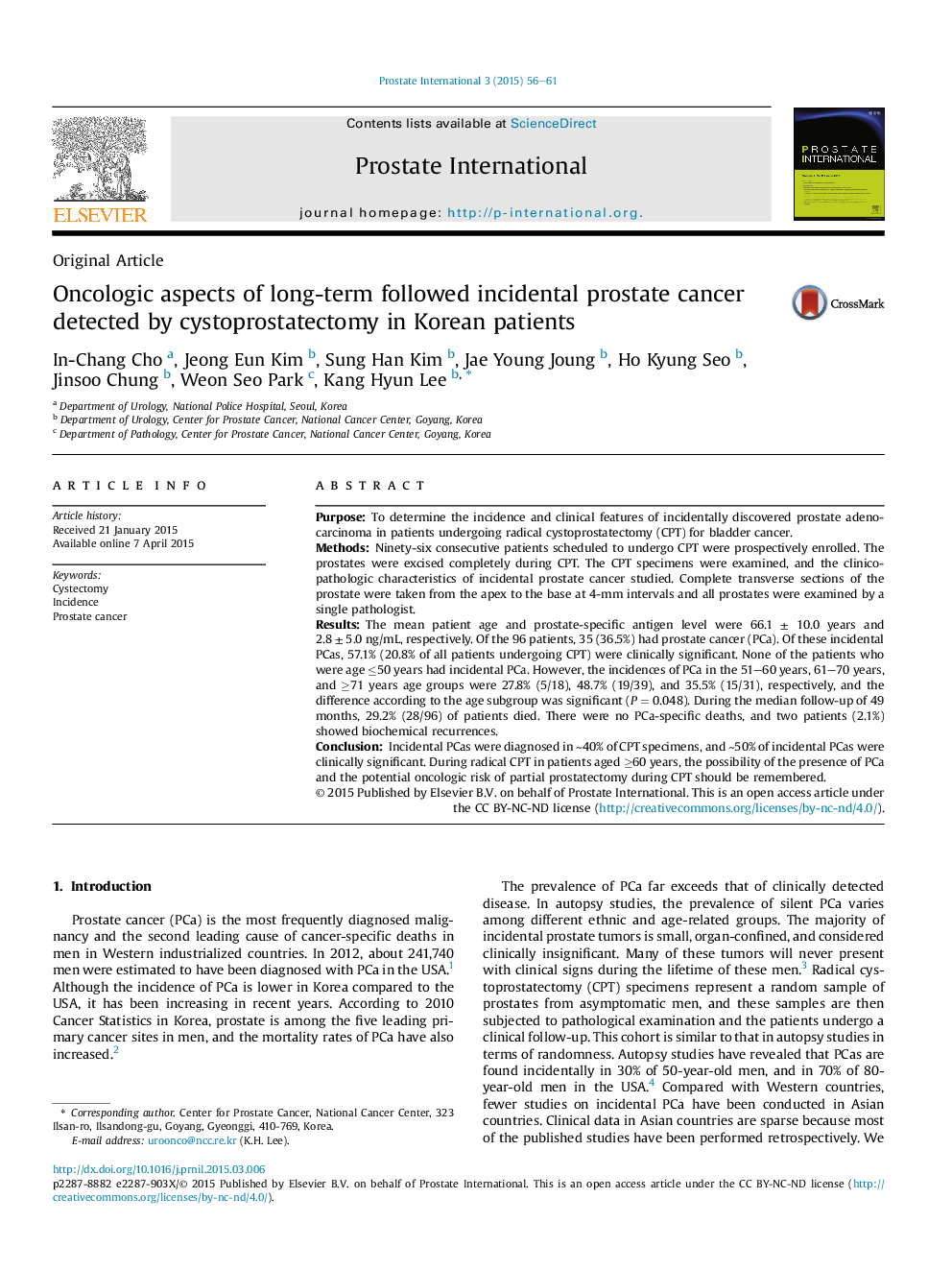| Article ID | Journal | Published Year | Pages | File Type |
|---|---|---|---|---|
| 4274191 | Prostate International | 2015 | 6 Pages |
PurposeTo determine the incidence and clinical features of incidentally discovered prostate adenocarcinoma in patients undergoing radical cystoprostatectomy (CPT) for bladder cancer.MethodsNinety-six consecutive patients scheduled to undergo CPT were prospectively enrolled. The prostates were excised completely during CPT. The CPT specimens were examined, and the clinicopathologic characteristics of incidental prostate cancer studied. Complete transverse sections of the prostate were taken from the apex to the base at 4-mm intervals and all prostates were examined by a single pathologist.ResultsThe mean patient age and prostate-specific antigen level were 66.1 ± 10.0 years and 2.8 ± 5.0 ng/mL, respectively. Of the 96 patients, 35 (36.5%) had prostate cancer (PCa). Of these incidental PCas, 57.1% (20.8% of all patients undergoing CPT) were clinically significant. None of the patients who were age ≤50 years had incidental PCa. However, the incidences of PCa in the 51–60 years, 61–70 years, and ≥71 years age groups were 27.8% (5/18), 48.7% (19/39), and 35.5% (15/31), respectively, and the difference according to the age subgroup was significant (P = 0.048). During the median follow-up of 49 months, 29.2% (28/96) of patients died. There were no PCa-specific deaths, and two patients (2.1%) showed biochemical recurrences.ConclusionIncidental PCas were diagnosed in ∼40% of CPT specimens, and ∼50% of incidental PCas were clinically significant. During radical CPT in patients aged ≥60 years, the possibility of the presence of PCa and the potential oncologic risk of partial prostatectomy during CPT should be remembered.
